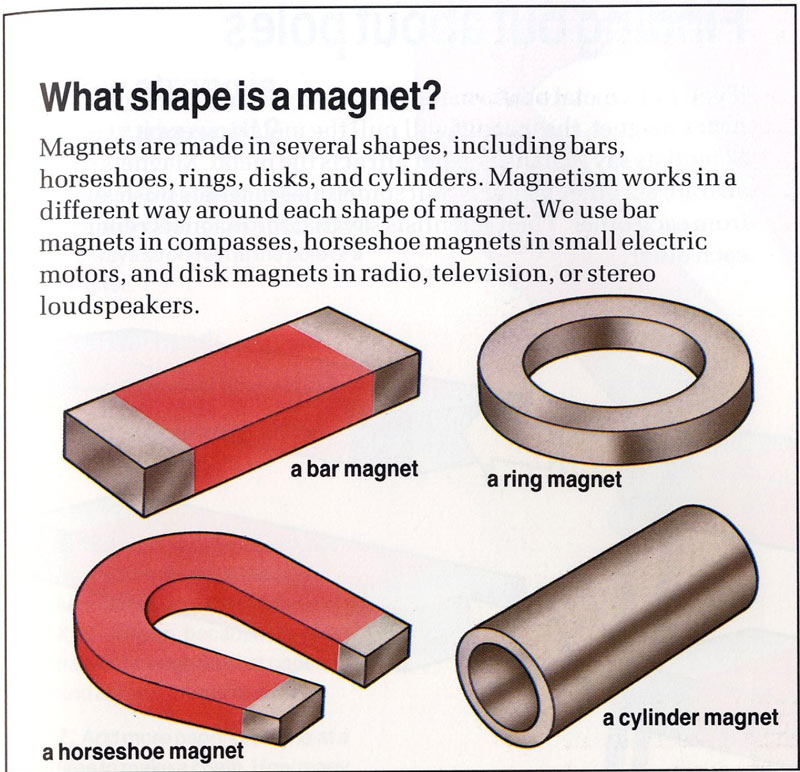Ever wondered how a fridge door stays shut without a lock? Or how a compass points north? Magnets are the invisible force behind these everyday mysteries, and there are a bunch of cool facts about them that kids will find fascinating. Get ready to unlock the secrets of these magnetic marvels!
Magnets aren't just cool toys; they're a fundamental part of how our world works. From the smallest atoms to the Earth itself, magnetic forces are constantly at play. Understanding these forces can help kids grasp key scientific concepts and spark their curiosity about the world around them.
Learning about magnets isn't just about memorizing facts. It's about exploring a fundamental force of nature. Let's dive into some amazing insights about magnets that will make kids look at the world with fresh eyes. Prepare to be amazed!
The story of magnets goes way back to ancient Greece, where people discovered a naturally magnetic rock called lodestone. This marked the beginning of our understanding of magnetism. Fast forward to today, and magnets are essential components in everything from electric motors and generators to hard drives and MRI machines. They're truly everywhere!
For kids, learning about magnetic information can be a gateway to understanding many scientific principles. It can fuel their passion for STEM subjects and inspire them to explore the wonders of the physical world. Understanding magnets helps kids understand concepts like electricity, energy, and even the Earth's magnetic field.
Magnets have two poles: north and south. Like poles repel (push each other away), while opposite poles attract (pull towards each other). This is why the north pole of one magnet will stick to the south pole of another.
An invisible magnetic field surrounds every magnet. This field is what allows magnets to interact with other magnetic materials without even touching them. Imagine it like an invisible force field!
Simple examples of magnetism in action include a compass needle pointing north, refrigerator magnets holding up notes, and even the Earth's magnetic field protecting us from harmful solar radiation.
Learning about magnets helps kids understand the world around them. It explains how many everyday devices work, from electric motors in toys to the magnetic stripe on a credit card.
Exploring magnets encourages scientific inquiry and critical thinking. Kids can perform experiments, make predictions, and test their hypotheses, fostering a love for science.
Understanding magnets can inspire future careers in STEM fields. From engineering and physics to computer science and medicine, magnetism plays a vital role in numerous professions.
Advantages and Disadvantages of Learning About Magnets
| Advantages | Disadvantages |
|---|---|
| Enhances understanding of science | Can be challenging for very young children to grasp abstract concepts |
| Promotes critical thinking and problem-solving skills | Limited hands-on activities for extensive learning may be required |
Best Practices:
1. Start with simple experiments: Use everyday magnets to demonstrate attraction and repulsion.
2. Use visuals: Diagrams and videos can help visualize magnetic fields.
3. Relate to real-world examples: Explain how magnets are used in everyday objects.
4. Encourage hands-on activities: Building a simple compass or electromagnet can reinforce learning.
5. Make it fun: Use games and interactive activities to keep kids engaged.
Real Examples:
1. MRI machines: Use powerful magnets to create detailed images of the inside of the body.
2. Maglev trains: Use magnets to levitate and propel trains at high speeds.
3. Electric motors: Use magnets to convert electrical energy into mechanical energy.
4. Hard drives: Store data using magnetic fields.
5. Loudspeakers: Use magnets to create sound waves.
Challenges and Solutions:
1. Challenge: Abstract concepts can be difficult to understand. Solution: Use simple analogies and demonstrations.
2. Challenge: Limited access to resources. Solution: Utilize online resources and everyday materials.
Frequently Asked Questions:
1. What is a magnet? A magnet is an object that produces a magnetic field.
2. How do magnets work? Magnets work because of the alignment of electrons within their atoms.
3. What are magnetic poles? Magnetic poles are the regions of a magnet where the magnetic field is strongest.
Tips and Tricks:
Use iron filings to visualize magnetic fields. Create a "magnet fishing" game by attaching magnets to strings and trying to catch paperclips.
In conclusion, understanding magnetism is not just about learning cool facts, it’s about unlocking a deeper comprehension of the world around us. From the simple refrigerator magnet to the complex workings of an MRI machine, magnets are essential components in countless aspects of our lives. By sparking curiosity and encouraging exploration in kids, we can ignite a passion for science that lasts a lifetime. So, go ahead, grab some magnets, and let the learning begin! It's an adventure waiting to happen, full of discoveries and "aha" moments that will stick with kids for years to come. The world of magnetism is just waiting to be explored!
Science Facts About Magnets for Kids - The Brass Coq
facts on magnets for kids - The Brass Coq
What Is Magnetism For Kids - The Brass Coq
facts on magnets for kids - The Brass Coq
Magnetism And Its Uses Worksheet - The Brass Coq
The Magnets Teaching Pack - The Brass Coq
What Kinds of Metals Do Not Stick to Magnets - The Brass Coq
4th grade magnetism worksheets happy shopping - The Brass Coq
facts on magnets for kids - The Brass Coq
Who Discovered Magnets and Other Rare Facts - The Brass Coq
How do Magnets Work - The Brass Coq
How Are Magnets Made - The Brass Coq
Magnet Activities For Kindergarten - The Brass Coq
What Are Two Common Materials That Are Magnetic at Keith Wallace blog - The Brass Coq
29 Interesting Magnet Facts For Kids 2022 Explained - The Brass Coq


/magnetism-147220256-5b4e02d8c9e77c001acf54e3.jpg)










